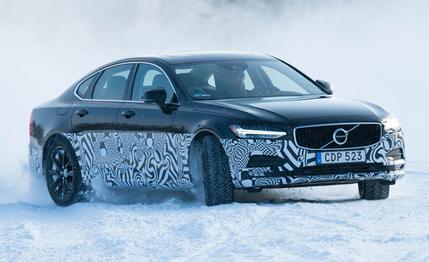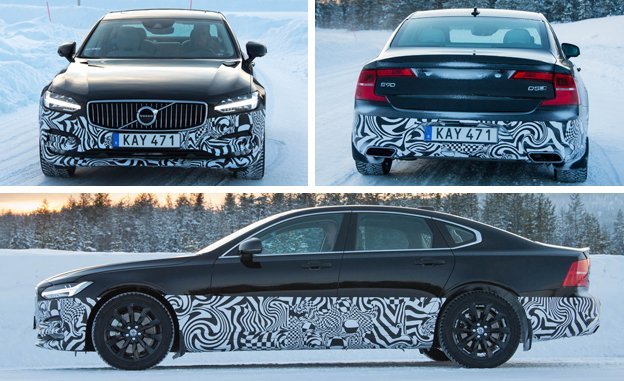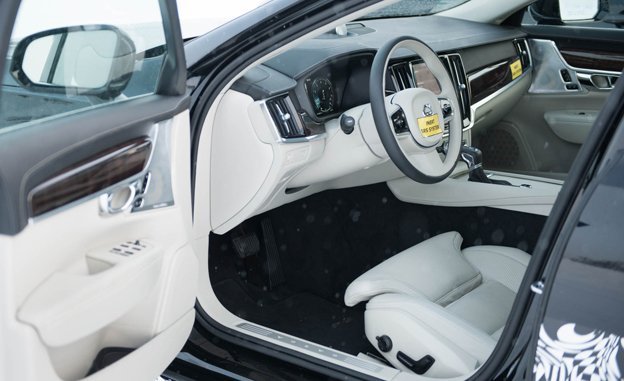
 Prototype Drive
Prototype Drive
Since the breakup of Volvo and Ford in 2010, the Swedish brand has been designing and engineering a new lineup paid for by an $11-billion investment by Volvo’s new owner, Chinese carmaker Geely. Volvo’s solution to life without Ford is an all-Volvo-designed platform called the Scalable Product Architecture (SPA). Highly adaptable to work under a variety of cars and SUVs, SPA made its debut with the XC90 SUV. The S90 sedan and V90 wagon are next. We recently had an early experience with the sedan in the Swedish hinterland.
Maybe it’s their long winters, but Volvo’s Swedish engineers were clearly excited about the flexibility of the new platform. Besides serving as the bones for a big SUV and a sedan/wagon, the hardware will also underpin the S60, V60, and XC60, Volvo’s next generation of mid-size sedans, wagons, and SUVs due around 2018. One reason the platform is so flexible is that, from the S60 to the XC90, every SPA vehicle will have four-cylinder power. If you need more oomph in your S90 than the 316-hp turbo- and supercharged four can provide, Volvo will sell you a hybrid version whose electric motor boosts output, as well as possibly a hot-rod Polestar model. The only immovable dimension in the architecture is the space between the front-axle line and the engine firewall, we’re told. The wheelbase, overhangs, and even the width can be taffy-pulled or pruned as necessary.


In the S90, the SPA platform offers 115.8 inches of wheelbase, nearly two inches fewer than in the XC90. The front and rear suspension hardware is shared with the XC90, but it’s tuned for the sedan, which Volvo says is 440 pounds lighter. Even if the claim proves true on our scales, Volvo will still end up with a 4300-pound sedan. Keeping weight off is a major challenge when using flexible architectures intended for both SUVs and cars.
At least the S90 seemed solid as it busted through chunks of snow and ice during our sampling in its wintry homeland. It was quiet, too. Although studded winter tires were fitted to our S90 T6 prototype, the car barely emitted a hum. The small but mighty engine and eight-speed automatic come on strong and pull hard. In the 4733-pound XC90, we’ve recorded a zero-to-60-mph run of 6.4 seconds; expect the S90 to dip into the mid-five-second range. The 400-hp plug-in-hybrid system of the T8 will make for an even fleeter S90. As for handling, the combination of a snow-covered track and the studded tires made it difficult to say how the S90 will behave on the road, so we’ll wait to render judgment until we drive the car on dry pavement.


Perhaps the most compelling part of the S90 is its clean and elegant design. Inside and out, the sedan looks expensive without any bit of flamboyance. But it’s not boring, either. It’s a lean car, with low, long, and wide proportions. Aston Martin’s Lagonda Taraf might be prettier, but it costs $1 million, and we’ve barely mentioned the better-looking wagon version of this car, the V90, which is not due until 2017.
We also haven’t talked about money, but that’s because pricing hasn’t been revealed yet. We’d guess that a 316-hp T6 will begin in the mid-$50,000 range; the 400-hp T8 should eat up most of $70,000; and the lowest point of entry, the 250-hp T5 with front-wheel drive, should cost nearly $50,000. All three models go on sale this fall.